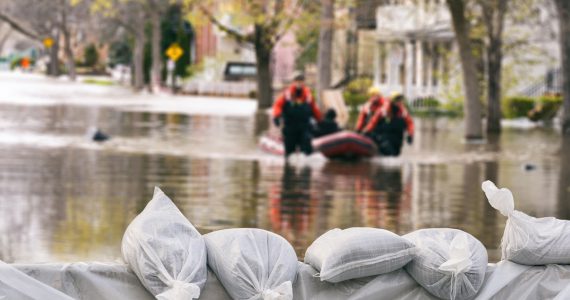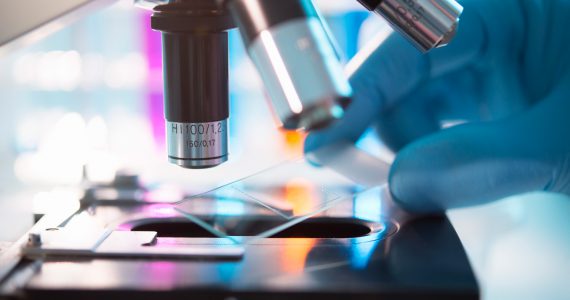Stephanie Moroz is combining her technical expertise with her driving passion – making the world a better place with new energy tech.
For some, nanotechnology promises a cure to cancer. For others, it’s the key to ensuring Moore’s Law continues the miniaturisation of electronics. For Stephanie Moroz, it offers vast improvements in energy tech such as improved battery life and charging speed.
“We are attacking the problem from a different angle,” said Moroz, CEO of innovative Sunshine Coast battery technology business Nano-Nouvelle.
“Essentially, we have a base technology that is a material. We can apply it to a lot of different things and right now we’re focusing on battery electrodes.”
Nano-Nouvelle’s materials include a three-dimensional structure at the nano-scale, electrical conductivity through a complex mesh of surfaces and a porous structure with a customisable surface area in the range of 0.5 to 5.0 m²/cm³.
“The structure is very different from how battery electrodes are currently made,” she said.
“Most of the work in battery electrodes is focused on existing technology, a flat foil that makes the electrical connection and brings electrons in and out. Then you layer particles of active material on top of that.”
She said most people are focusing on changing the active particles and trying to get them to bind better to the foil.
“Our material, coated with copper, replaces the foil. Instead of having the flat foil we have this porous, high surface area. We coat all of that surface with a much thinner layer of active material, which avoids the problems you experience when you increase the thickness of active material and you can’t get the electrons in and out.”
Nano-Nouvelle’s product is called Tin Nanode, an anode for lithium-ion batteries thatmakes use of the high energy density of tin and the greater surface areas possible for materials using nanotechnology.
Instead of having the current collector placed next to the active material, the Tin Nanode is throughout the active material, like a sponge submerged in water. The current collector has far greater surface-area contact with the active material, offering new efficiencies.

“Users will mainly notice an increase in the length of time batteries last between charges,” Moroz said.
“We are looking at up to 50 per cent longer for the same-sized traditional battery. We’re also aiming to have it charge faster, but the full battery charge speed depends on several other components as well.”
The company was founded in 2011 and Moroz took over as CEO in 2013, but the journey that took her to this innovative place began many years before in western Canada.
Deciphering the world
Moroz’s story begins on Vancouver Island, where she spent her childhood exploring the outdoors.
“From an early age I had a very strong interest in the environment,” Moroz said.
“Having grown up with all of the mountains and rainforests and waterfalls, I wanted to do something that would help to preserve that.”
At the time, Canada was suffering the effects of acid rain. Forests and lakes had been damaged or destroyed as a result of pollution from industry. In much the same way as young Australians today have a great appreciation of the value and potential scarcity of water, so too did Moroz develop a concern for the quality of her environment.

She made the decision to study engineering physics at The University of British Columbia and spent her third year of study on exchange at the University of Melbourne, a decision that began a long period of wanderlust and ultimately drew her back to Australia.
After returning to Canada for her final internship in 1995, she chose the Ecole Polytechnique in Montreal. At the time, a national debate was raging around whether the French-speaking province of Quebec should become its own nation.
“I wondered how can we understand these people if we don’t speak their language,” Moroz said.
“So I began studying French. Then I sought the internship in Québec. Reading the news in both languages was fascinating. Events were reported completely differently in each language, so unless you had both languages you never realised how biased reporting was.”
There was also a darker side to the experience. Just six years earlier, the Ecole Polytechnique had played host to a horrifying attack by a gunman that left 14 women dead (12 of them engineering students). It was reported the killer had a problem with women working in nontraditional jobs.
“The Montreal massacre was horrifying,” Moroz said.

“It was a huge issue for the whole country. But at the same time it raised awareness of engineering. I would not say it influenced my decision to study engineering, but it did raise my awareness around the industry.”
It was fascinating, she said, to study in the place that had become so famous for such a tragic event only six years earlier. Strong locks requiring PIN codes were on every door and some staff were still traumatised. Many of the academics had hidden students in their offices as the gunman roamed the building.
By the time Moroz returned to Vancouver, she had a new language and a fresh appreciation of the way the world worked. She took a job as a product development engineer with Ballard Power Systems, a company developing hydrogen fuel cell technology.
But her time in Melbourne and Montreal made her itchy to see more of the world. Three years later, Moroz accepted a promotion to the position of senior engineer at Ballard Power Systems’ German office, in a small town near Stuttgart. It was time to learn another language, and the next step on a lifetime journey around the globe.
Engineering for the environment
In Germany, Moroz continued her work on hydrogen fuel cells. They have been heavily adopted by the forklift industry, for instance, which requires zero emissions as the vehicles are used indoors.
“Some forklifts are still run by lead acid batteries,” she explained.
“The problem with that is all of the forklifts go flat at the same time, meaning everybody needs more batteries at the same time. So you need all of these extra batteries being charged. It is economical for warehouses to use fuel cell forklifts, instead.”
“Hydrogen fuel cell cars are more popular than Australians realise. There is a lot going on in Europe, Japan and South Korea. The big difference between hydrogen and battery electric vehicles is that hydrogen fuel cell cars need refuelling stations. That is where they have struggled over the years. You’re not going to buy a car if you can’t fill it up anywhere and you’re not going to build a refuelling station if there are no cars that require it.”

But after four years in Germany, Moroz once again felt the urge to continue to explore her career and the world. Her next stop was France.
“I had been in Germany for a while and didn’t feel like I wanted to be there long-term, so I looked towards France to find a job that was interesting,” she said.
She found work with Valeo, a listed automotive parts supplier. There she led a product development team developing a new type of heat exchanger for air conditioning systems, one that would use CO2 as a fluid rather than hydrocarbons, reducing pollution and increasing efficiency.
After two years, Moroz moved on to work on engine systems that would help internal combustion engines to reduce their own pollution while increasing efficiencies. In this role she and her team tinkered with air systems, thermal system architecture, two-stage turbocharging, biofuels, waste heat recovery and more.
Along the way her people-management experience was being fine tuned. Her responsibilities began to stretch beyond engineering to marketing, product development, budget management, HR, project management and more.
Her career prospects were broadening as the industry in which she worked flourished. Then the global financial crisis of 2008 changed everything.
The other side of the world
“We were hit pretty hard by the global financial crisis,” Moroz said.
“We actually called it the ‘automotive crisis’ because it hurt us so badly. I still had a job, but all of my project budgets were cut and there was zero travel.”
 A friend in Germany had heard about a position in Australia with a business called Hydrexia and had mentioned it to Moroz, whose original reaction was to call the idea of moving to Australia “completely crazy”. But then she began to recall how much she had enjoyed her time in Melbourne.
A friend in Germany had heard about a position in Australia with a business called Hydrexia and had mentioned it to Moroz, whose original reaction was to call the idea of moving to Australia “completely crazy”. But then she began to recall how much she had enjoyed her time in Melbourne.
“I contacted the CEO and travelled to Australia for an interview,” she recalled.
“It was very warm in Brisbane, it was January. When I landed back in Paris and there was ice all over the ground and everybody was wearing black and looking grumpy, I realised I wanted to move to Australia.”
After a long visa process, Moroz shifted her life to Brisbane in September 2009. Her role with Hydrexia was CTO, but as the CEO was based in Melbourne, her responsibilities were across the board. Hydrexia engineers low-pressure hydrogen storage systems with high storage densities.
Once in Australia, Moroz also developed a connection with Engineers Australia. Her home was in Spring Hill, not far from the Queensland office of Engineers Australia. She earned her Chartered Engineer status, attended events and sat on several committees, including the Centre for Engineering Leadership and Management and the Innovation Sub-Committee.
At the end of 2013, she was offered the role of CEO of Nano-Nouvelle at Forest Glen, west of Maroochydore.
If steering a disruptive innovation through the international battery arena is not motivation enough to keep her in one spot for a while, in her time off she is learning to surf which, she said, might be the ultimate sport for engineers.
 “I’m still no good at it, but I love it,” she said.
“I’m still no good at it, but I love it,” she said.
“Trying to read a wave and know what it is going to do, figuring out how the fluid is going to behave, I think is a good challenge for engineering minds.”
She has also introduced a new sport to the Sunshine Coast community, ‘Ultimate’, which is most easily described as football with a Frisbee.
“It didn’t exist on the Sunshine Coast before I arrived, so it took a lot of effort to get enough people to come along to form teams and play,” she said.
And so the traveller has landed on the other side of the world and found a new home, far from the island on which she grew up. But from her journeys Moroz has brought with her knowledge and experience that she is now sharing with industry and with her community to help achieve her goal of doing something good for society.
“I have always enjoyed bringing different aspects of a system together,” she said.
“In my current position and current place, I am able to do this effectively. It feels good.”







